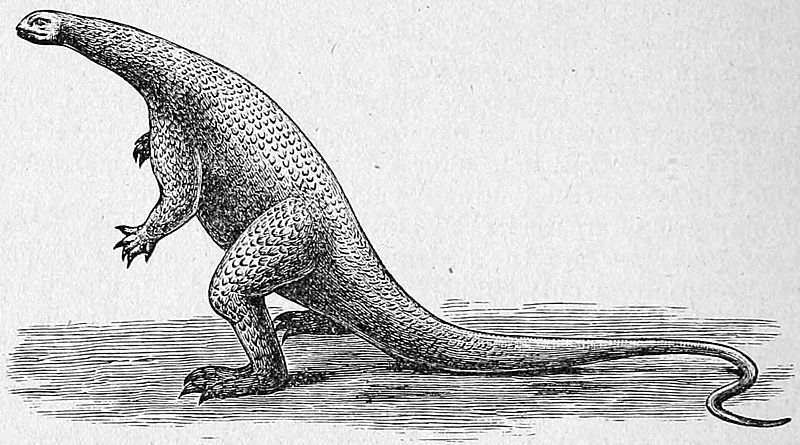Image: Geological magazine (1914) (14764329552)

Description: Identifier: geologicalmagazi611914wood (find matches) Title: Geological magazine Year: 1864 (1860s) Authors: Woodward, Henry, 1832-1921 Subjects: Geology Publisher: London (etc.) Cambridge University Press Contributing Library: Smithsonian Libraries Digitizing Sponsor: Smithsonian Libraries View Book Page: Book Viewer About This Book: Catalog Entry View All Images: All Images From Book Click here to view book online to see this illustration in context in a browseable online version of this book. Text Appearing Before Image: ward and backward. The first and second toes often show tracesof distinct pads, there being two on the first and three on the seconddigit. It is obvious, from inspection of good prints, that these padslie below the articulations, as in Dr. Lulls Dinosaurs, and notbetween them as in ourselves. The distal end of each digit endsin a small claw, which extends beyond the pad. The posterior endsof the pads of the toes are separated when lightly impressed andrepresent the articulation between the lower ends of the metatarsalsand the first phalanges. The sudden termination of the pads behind shows that themetacarpus was carried clear of the ground, i.e. that the animalwas digitigrade. In some exceptional specimens the pads run intoa distinct sole, as is, for example, the case in the type-specimen ofCheirotherium hercuUs; in such cases, which, may represent a restingposition, the heel, which is presumably made by the metacarpus,is slightly longer than the phalangeal part of the impression. The Text Appearing After Image: Fig. 2.—Eestoration of Plateosaurus from specimens in the BerlinMuseum. After an outline figure by Professor Jaekel, in DieWoche, Hft. xxvi, Berlin, 1912.^ fifth digit, which we have not hitherto considered, lies in anextremely curious position with its very large posterior pad behindthe third digit. The whole arrangement suggests that the metatarsalacted as a sort of strut to the tarsus, the other four metatarsalsstanding not quite vertically, but at some angle between that andhorizontally. It is, unfortunately, impossible to determine thenumber of phalanges in this toe, but it is not improbable that therewere only two. No known Triassic Dinosaur has so well-developeda fifth toe as Cheirotherium, but the foot of Plateosaurus seems to menot very dissimilar, and it is quite possibly a descendant of thatanimal. The further reduction of the fifth digit in most Dinosaursmay conceivably be due to the fact that when the metatarsus becamevertical its use as a strut disappeared, and, as no Note About Images Please note that these images are extracted from scanned page images that may have been digitally enhanced for readability - coloration and appearance of these illustrations may not perfectly resemble the original work.
Title: Geological magazine (1914) (14764329552)
Credit: https://www.flickr.com/photos/internetarchivebookimages/14764329552/ Source book page: https://archive.org/stream/geologicalmagazi611914wood/geologicalmagazi611914wood#page/398/mode/1up
Author: Otto Jaekel, uploaded by Internet Archive Book Images
Permission: At the time of upload, the image license was automatically confirmed using the Flickr API. For more information see Flickr API detail.
Usage Terms: Public domain
License: Public domain
Attribution Required?: No
Image usage
The following page links to this image:

